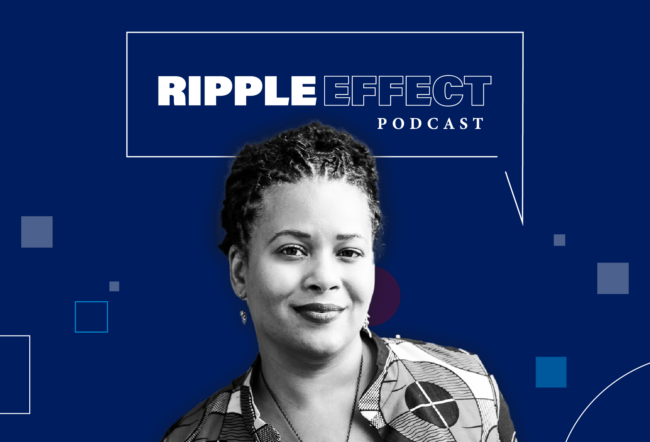In July, a consortium led by Microsoft, Apple and wireless industry players such as Research in Motion paid $4.5 billion for 6,000 patents from the now liquidated networking company Nortel. Last month, Google purchased Motorola Mobility for $12.5 billion, in part to gain access to the company’s 17,000 patents. And Eastman Kodak, a company struggling to navigate the digital era, has multiple parties bidding to buy its patent portfolio.
Welcome to the patent bull market. “There is clearly a patent-hoarding mentality in technology — and in mobile communications, specifically,” says Andrea Matwyshyn, a professor of legal studies and business ethics at Wharton. “The game is to amass as many patents as you can.”
Part of the reason for the run on patents is the surge in lawsuits among key industry players. Oracle is suing Google for Android royalties, alleging that the search giant’s mobile operating system infringes on the patents for its Java programming language. Microsoft is suing Motorola, claiming that the cell phone manufacturer has violated its software patents. Meanwhile, Apple and mobile phone manufacturer HTC have also filed suits against each other. Pick any company in the wireless industry, and you are likely to find a patent lawsuit associated with it, say experts at Wharton.
The most recent high-profile court battle is between Apple and Samsung. Apple alleges that Samsung’s tablet device and smartphones have copied the iPad and iPhone, respectively. Samsung asserts that the concept behind the iPad and similar technologies originated in science fiction film and television productions which featured computing tablets decades ago — including 2001: A Space Odyssey and “Star Trek.” The company also claims that Apple’s iPhone infringes on its wireless networking patents. Last month, Apple sought — and won — an injunction on sales of Samsung’s Galaxy Tab tablet device in Europe. What makes the Apple-Samsung patent lawsuit particularly notable is that Apple is Samsung’s largest customer for memory, screens and other tablet components.
“There’s a state of open warfare around patents,” notes Wharton legal studies and business ethics professor Kevin Werbach. “If you want to play in this space, you need to bring some assets to the table.” According to Werbach, patent accumulation is largely a defensive strategy. Given the prevalence of lawsuits, companies are gobbling up intellectual property so they have an arsenal to use in countersuits. Two companies with large patent portfolios will often settle a lawsuit with a cross-licensing pact.
“In valuable segments, companies are using the legal system to threaten rivals and extract concessions,” says David Hsu, a management professor at Wharton.
“A patent is really just a right to sue another party for infringement,” notes Karl Ulrich, a professor of operations and information management at Wharton. “Often, an infringement suit legitimizes what is essentially bullying of a poor company by a rich company. In these cases, the party with the deeper pockets can intimidate the other into licensing a patent, or into ceasing sales of the allegedly infringing product.”
From Trolls to Combatants
Several years ago, the rise of so-called “patent trolls” — entities that acquire intellectual property solely to launch lawsuits — was seen by many as a sign that reform of the patent system was needed.
Today, patent litigation is frequently more about mutually assured destruction between combatants in competitive industries, says Werbach. According to this line of thinking, the company with the most patents can win. A common strategy is to acquire multiple patents that feature “foundational” technologies — basic innovations that all subsequent similar devices would have to rely on, such as digital imaging, wireless networking and corporate email interfaces — to secure market position, he notes. “For the last 10 to 15 years, major technology vendors have had the most patents awarded. For those companies, patents have always been defensive.”
Why play defense? Companies looking to expand often target the markets of larger or more established companies. A key disadvantage for these new entrants is that they lack the intellectual property to fend off lawsuits.
That dynamic has been illustrated by Google’s recent dust-ups over its Android operating system, Werbach points out. Because the search company is a relative newcomer to the mobile communications space, “that means [it has] much less of a patent portfolio. Given that situation, it’s not surprising that others would use their patents against Google.”
Ulrich notes that Google’s acquisition of Motorola Mobility changes the equation: Now, Google has 17,000 patents for use in countersuits. “The Motorola patent portfolio gives Google an essentially unlimited set of opportunities to sue its rivals, which strengthens its strategic position. If it chooses to do so, Google could force Apple to spend hundreds of millions of dollars on patent litigation, and vice versa. More likely, these superpowers will enter into some kind of patent detente,” he predicts.
Google CEO Larry Page partially justified the $12.5 billion Motorola Mobility deal based on patents and the defense they can provide. “Motorola has a strong patent portfolio which will help protect Android from anti-competitive threats from Microsoft, Apple and other companies,” said Page during a conference call on August 15, the day the acquisition was announced. Since the announcement, however, executives at the search giant have played down the argument that patents were the primary motivation for the deal. On September 1, Google chairman Eric Schmidt noted during a conference presentation that Motorola Mobility also has strong engineers, wireless expertise and good smartphone designs.
Schmidt added that the patent system needed to be repaired and hinted that intellectual property valuations were being stretched. When bidding for Nortel’s patents, for example, Google initially offered $900 million. “After the consortium [including Apple, Microsoft and others] went after those patents, we dropped out,” said Schmidt. “The value of those questionable patents just went up and up and up.”
A Patent Explosion
Compounding the situation is the relative ease of obtaining patents in the first place, experts say. According to Matwyshyn, the United States Patent and Trademark Office (USPTO) has been awarding a growing number of patents, even though the group lacks the expertise and resources to effectively keep up with emerging technologies and evaluate claims. In fact, analysts point out that the Google acquisition of Motorola Mobility perfectly illustrates the current patent cycle: The USPTO awards patents liberally; these patents are used in lawsuits and companies acquire them to either sue or defend against other lawsuits.
“The rate of patenting has gone through the roof in all domains,” Hsu says. “It used to take decades to get to the next millionth patent. That has been shortened to four to six years. Are we getting more innovative, or is it more likely that patents are seen as [simply] defensive and strategic?”
Ulrich says the ease of obtaining a patent only inspires companies to acquire more intellectual property. “The bar for obtaining a patent is very low. It may be that some of the unproductive activity associated with patent litigation could be mitigated by increasing the cost of obtaining a patent and/or by raising the patent office’s standards for novelty and usefulness,” he suggests.
During his conference presentation, Google’s Schmidt also offered his theories on patent reform, arguing that the USPTO is outgunned and underfunded, which hampers its ability to adequately sort through patent applications and reject those that are without merit. “The correct way to solve the patent problem [is] to … crowd-source them for comment to see if there was prior art. The patent system does not allow for that disclosure.”
Schmidt added that the current patent system could hurt innovation if current practices continue. “We were fortunate in the software industry that it was defined not by patents, but creativity. I’m worried these overbroad patents will slow [the software industry] down,” said Schmidt.
According to Ulrich, patent reform will require two key ingredients: A faster response from the USPTO and disincentives against lawsuits. “There are currently two main problems with the patent system in the U.S. First, the patent office requires two to three years for a first response to a patent application. That is not a sustainable situation. Second, as with most other types of litigation in the U.S., a plaintiff who loses a patent case is rarely required to pay the other party’s legal costs. That lack of disincentive for litigation dampens healthy competition in the market,” says Ulrich.
On September 8, Congress passed the America Invents Act, which aims to streamline patent applications and better fund the USPTO. The act, expected to be signed into law by President Obama, will mean the United States will use a “first inventor to file” system instead of “first to invent” system to determine which patent applications hold the most merit, bringing it in line with other developed countries. It will also provide a nine-month window for inventors or companies to contest a patent after it is granted.
However, Wharton faculty warn that there are risks to extensive patent reform. “Once you start pulling these systems apart, there are a lot of intended and unintended outcomes,” says Hsu. “Will people have the incentive to innovate if they aren’t given patent protection?”
Werbach agrees. “If you tweak any complex system, it becomes a design exercise in incentives. You have to start with the question of what incentives the system is designed to create. Obviously, you want to promote innovation.” In addition, he notes, reform would have to cover many companies outside of technology. “The reality is patents operate differently in various contexts. What a patent means to HTC’s business is very different than [what it means for] Pfizer.”
Kodak’s Moment
Given the current patent system — and companies’ penchant for acquiring intellectual properties like Cold War countries amassing warheads — it’s not surprising that valuations are being stretched.
Matwyshyn says a patent bubble is possible. Eastman Kodak, which has struggled since photographic film gave way to digital images, announced in July that it was seeking buyers for its digital imaging patent portfolio. It has sued a number of companies through the International Trade Commission over digital imaging patents. Since smartphones now double as digital cameras, its patents could become increasingly important, analysts predict.
During the company’s second quarter earnings conference call on July 26, CEO Antonio Perez emphasized that the firm’s 1,100 patents are valuable. “One of the great strengths of this company has always been our intellectual property,” he said. “We were one of the first companies to invest in digital imaging technologies, and in fact, we invented the digital camera in 1975.” Others agree that Eastman Kodak’s patents are foundational and therefore valuable; some analysts have valued the company at $3 billion, mostly because of its patents.
Deutsche Bank analyst Chris Whitmore said in a research note that Eastman Kodak needs to win patent lawsuits and sell its digital imaging portfolio for cash flow. The company has burned through $900 million in operating cash in the first half of 2010, but could replenish its coffers with the sale of its digital imaging patents, according to Whitmore. For the six months ended June 30, Eastman Kodak reported a net loss of $425 million on revenues of $2.8 billion.
Given the current bidding wars, experts at Wharton say that Eastman Kodak, or any firm with foundational patents, may fetch a handsome sum for intellectual property.
“The current system isn’t optimal, but it’s likely to stay,” says Matwyshyn. “As a result, we may be in a patent bubble that could spread to other forms of intellectual property, such as [various forms of] virtual assets. What is a virtual farm with 16 virtual cows worth? There’s a broader set of questions for intellectual property valuations that’s just beginning [to emerge].”



